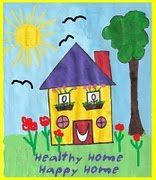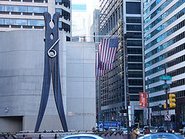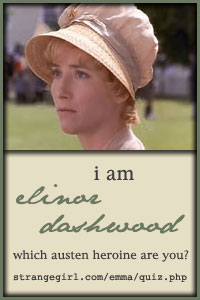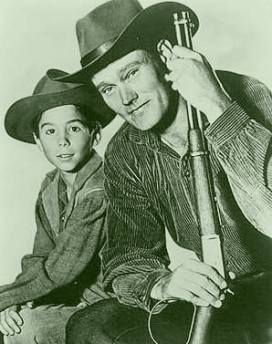Picture books are quick reads, lots of fun, and often gems of characterization, mood, and dialogue. They are also perfect for teaching the young writer how to organize plot logically.
Many writers start new works by capturing tidbits of ideas on scraps of paper. But how do we make sense of those ramblings? This question leads to a classic step in teaching writing often called prewriting. It also points to what may be one of the most important early steps in story making - creating organization through plot structure.
In prewriting, many teachers use a variety of story-mapping techniques to help children see relationships between ideas, including clustering, webbing, and listing items and actions that belong to the beginning, middle, or end of a story. All of these techniques are helpful, but do they go far enough? How does a student know which items listed in the "middle" section of a story map should go first, second, third? Sometimes it is the sequencing of the action in a story that can cause the student to falter. This step can be mastered through the use of visual and textual examples of standard plot structures.
When introducing the idea of structuring a story, talk about how our skeletons hold us up - otherwise we'd be… "puddles!" Stories have internal structures or frameworks that hold them up, too. Knowing what the skeleton of a story looks like early in the process makes knowing what to write next in the drafting and revising steps a lot easier.
Below are lists of some basic plot structures, along with picture books that use those structures. Sharing these picture books will help students better understand how to shape their own story making.
Please note that the grade levels below indicate the suggested grade level of the writer or prewriter (storyteller). These grade ranges reflect the difficulty of the plot structure being taught, not the reading or listening age. The open-ended grade levels highlight the fact that many fine picture books can be used as examples for writers of all ages, even adults.
Cumulative or Toppling Stories
Cumulative stories such as Rhonda Gowler Greene's This Is the Teacher add repeating elements as the story progresses, until the plot finally topples over at the end.
Like the traditional tale "The House That Jack Built," the stories below add repeating plot elements and characters in the text as the story progresses, until the whole structure topples from its own weight - usually with humorous results.
- This Is the TeacherGr. 3-up. From the time the students rush in, drop their lunches, spill the ant farm, and let loose a snake, until the teacher collapses at home, this cumulative story inspired by "The House That Jack Built" is one funny romp.
- In Enzo's Splendid Gardens
- The Napping House A cozy bed, a snoring granny, a dreaming child, a dozing dog, a snoozing--This is a timeless cumulative tale that's truly like no other.
- The Cake That Mack AteGr. 2-up. Another story inspired by "The House That Jack Built," this humorous cumulative tale told in reverse chronological order lists the ingredients and introduces everyone that had a part in baking the cake that Mack ate. At the toppled ending, there's a big surprise in store for readers when Mack is introduced.
Decreasing Stories
Carole Lexa Schaefer's The Biggest Soap has a "decreasing" plot structure — the soap that Kessy is sent to but becomes smaller and smaller as the story goes on.
Traditional tales based on a decreasing story structure include "The Tailor" and "Ten Little Monkeys."
- The Biggest SoapGr. 2-up. Set in Micronesia, this story tells of Kessy, who is sent to buy "the biggest soap" for laundry day. On the way home, the soap gets smaller and smaller as Kessy uses it to help friends and family he meets along the way. When he finally delivers it to Mama, there's barely enough soap left for the laundry, but Kessy makes up for it with the stories he shares of his adventures.
- Bunny MoneyGr. 2-up. Max and Ruby are shopping for Grandma's birthday gift, but the money is slowly
used up as Max gets thirsty, hungry, and messy. (The laundromat alone costs three dollars.) Fortunately, in the end there's enough for them each to buy a perfect gift.
Joseph Had a Little Overcoat
Gr. 2-up. This is a 1999 book by Simms Taback that won the 2000 Caldecott Medal. The main character is Joseph, a 40-something Jewish farmer, who has a little striped overcoat. When it is old, Joseph makes it into a little jacket and so on until he makes it into a button. Then Joseph loses the button and makes a story out of it. The moral of the story is "you can always make something out of nothing."
"Increasing" Stories
Bill Grossman's My Little Sister Ate One Hare is a counting story with an "increasing" plot structure — the items on the sister's menu grow more outrageous, until the story finally reaches a satisfying conclusion (she throws up).
While cumulative stories use textual repetition that piles up until the whole story collapses (often under the weight of pure silliness), stories with an "increasing" plot structure proceed logically to arrive in a planned way at a satisfactory conclusion. Traditional tales based on an increasing story structure include "The Little Old Lady who Swallowed a Fly."
- Bark, GeorgeGr. 2-up. A mother dog takes her puppy to the vet only to discover he has swallowed a series of animals, each one larger than the last. Wonderful illustrations and a funny ending will make this a hit with young readers and listeners.
- Mushroom in the RainGr. 2-up. In this book with a doubly increasing structure, gathering animals shelter from the rain beneath a mushroom and discover there is always room for one more. Why? Because mushrooms grow bigger when it rains.
- My Little Sister Ate One HareGr. 2-up. This hilarious counting story with a wonderfully funny refrain relates all the horrible things a little sister eats, from one hare to 10 healthy peas. As the sister's appetite increases, so does the humor.
Simultaneous Increasing and Decreasing Stories
- Something from NothingGr. 3-up. This version of the folktale "The Tailor" (mentioned in "Decreasing" Stories, above) relates the decreasing nature of Joseph's blanket while also showing an increasing story below the floor, where bits of worn-out blanket flutter down to a mouse family, whose members use each scrap to decorate their home.
- The Doorbell RangGr. 2-up. In this story the number of cookies per child decreases as the number of drop-in visitors increases. But there's a surprise at the end! This is great for a math exercise as well as being an effective writing model.
Parallel Stories
- Just Like DaddyGr. 2-up. In this easy reader, Little Bear does most things just like his daddy. In a surprise ending, he also does some things like his mommy. This story switches between the two main characters and clearly illustrates parallel activities.
- Click!Gr. 3-up. The parallel stories of a polar bear cub and a boy with his first camera serve to illustrate the characters' similarities as they make for the water's edge with their mothers for lessons in hunting and photography.
- Meanwhile Back at the RanchGr. 3-up. Nothing ever happens in Sleepy Gulch. But when Farmer Hicks goes to town to look at the same wanted posters that have been there for 12 years, his wife, Elna, is in for some surprises. This parallel tale hilariously switches back and forth between the two characters and their situations.Blueberries for Sal
Sal and her mother are picking blueberries to can for the winter. Mama Bear and her cub are eating sweet blueberries on the other side of the hill. Sal wanders to the other side of Blueberry Hill and discovers mama bear preparing for her own long winter. Meanwhile Sal's mother is being followed by baby bear with a big appetite for berries!
With its expressive line drawings and charming story, Blueberries for Sal has won readers' hearts since its first publication in 1948.
Stories within Stories
Allen Say's Kamishibai Manis a story within a story: the tale the elderly storyteller tells reveals why he no longer performs his art.
With more advanced writers, explore the plot structure of the framing story and compare it with the structure of the inner story. For example, in The Day Jimmy's Boa Ate the Wash the inner story closely resembles a cumulative plot that heaps one silly event on top of another, while the framing story is told in a linear fashion.
- The Day Jimmy's Boa Ate the WashGr. 3-up. In reverse chronological order, a girl describes her school's field trip to her increasingly startled mother. Despite mayhem involving crying cows, joy-riding pigs, and a left-behind boa constrictor, all ends well in this story inside a story.
- Kamishibai ManGr. 3-up. Set in modern-day Japan, Say's story tells of an elderly Kamishibai man (itinerant storyteller), long retired, who, missing his rounds, decides to pedal back to the old neighborhood for one last performance. The story-within-a-story that emerges reveals why this unique type of performance art has all but disappeared.
- The Three PigsGr. 4-up. In this Caldecott Medal book, the three pigs escape from the illustrations and wander through the book's white space, creating a new story. Then a rescued dragon and a cat join the pigs as they reconstruct the classic story and outsmart the wolf.
Stories with Linear Time Lines
- Every Autumn Comes the Bear
- Gr. 3-up. With luminous paintings nature illustrator Arnosky vividly portrays a bear's search for a winter den and follows him through the last days before his hibernation.
- The Very Hungry CaterpillarGr. 2-up. In this now-classic story marked by Carle's beautiful collages, a very hungry caterpillar eats and grows. After his stay in a cocoon, he emerges as a colorful butterfly. The time line in this book follows the days of the week and includes all the food the caterpillar eats.
- Trashy TownGr. 2-up. Mr. Gilly is the trash man, and this time-line story follows his day as he empties the trash bins around Trashy Town into his truck. With a wonderful refrain throughout, this story is an engaging read-aloud.

Stories w/ "Around the Clock" or Full-Circle Time Lines
Lisa Wheeler's Bubble Gum, Bubble Gum has a full-circle time line. After a menagerie of animals escapes from a bubble gum mess, a bear and a hen get stuck and start the story again.
- Chicka Chicka. Boom BoomGr. 3-up. Those naughty numbers climb up the tree and get in trouble. After they recover from their fall, can they resist doing it again? This fun story goes full circle and also provides a snappy introduction to the alphabet.
- If You Give a Mouse a CookieGr. 3-up. In the first of Numeroff's popular series of circular tales, Mouse asks for one thing after another, all because a little boy has given him a cookie. Be careful what you offer a mouse!
- Bubble Gum, Bubble GumGr. 3-up. Toad, Shrew, Goose, Bee, and Crow get stuck on a wad of bubble gum in the middle of the road. Oh, no! Here comes a blue truck. Ingenuity and cooperation pay off, but the story's not done yet, for in this full-circle tale a bear and a hen start it again.
Stories w/ Rising Action
The stories below are marked by rising action leading to a climax and a final denouement.
- The Tailypo: A Ghost StoryGr. 3-up. When a varmint sneaks into an old man's house, the old man cuts its tail off and eats it. In the night the varmint returns for his "tailypo." As the tension rises, this classic folktale retelling is sure to make readers shiver.
- Saving SweetnessGr. 4-up. The sheriff is bound and determined to rescue the little orphan, Sweetness, before she runs into that desperado, Coyote Pete. But it isn't as easy as he thought. This story, with a traditional rising action plot, has lots of twists and turns and a humdinger of an ending.
- Company's ComingGr. 4-up. This story is a wonderful example of what can happen when people jump to conclusions. Moe thinks there is something fishy about their intergalactic dinner guests and warns the marines. And just what have the guests brought in that package for his wife, Shirley? The tension rises rapidly in this humorous tale.

Teaching Strategies
- If your students are using clustering techniques during prewriting, have them cut out their ideas and glue them to a visual diagram of one of the plot structures. This will give visual learners a template for the drafting step.
- Cut up a story into sentences and distribute them. Have the students line up in the order they think the story should be told. If it is a story with rising action, are they in line from least to most tense action? If it is a story with a decreasing or in creasing plot line, are they lined up correctly? (Hint: To make this even more visual, have the kids sit on the floor and use cushions, chairs, and stools so that their heights range progressively up or down.)
Professional Resources
- Craft Lessons: Teaching Writing K-8These clear, concise writing lessons are usually a page in length, with a short discussion section, a how-to-teach-it section, and lists of necessary resources.
- Deep RevisionThis book about the process of revising both fiction and nonfiction includes insightful examples of early drafts and final revisions, with many exercises that encourage students to go deeper into the writing process.
Web Connections
The websites below about teaching writing with picture books may be found on the Book Links website. Click on "Web Connections," then "May 2006" to access the list.
- WriteNetWriteNet features a listserv where teachers and writers can offer advice on methods for teaching writing to students in grades K-12.
- Picture BooksWith a wealth of information for lovers of picture books, Picturing Books is a nonprofit, ad-free website created by a librarian that features interiors of well-known picture books, information on how picture books are put together, and tips on how to evaluate and share them.
About the author
Shutta Crum was the recipient of the Michigan Library Association's Children's Services Division 2002 Award of Merit as Youth Librarian of the Year. She is also the author of Click!, listed above. For more information, see her website.
http://www.readingrockets.org/article/story-skeletons-teaching-plot-structure-picture-books











No comments:
Post a Comment